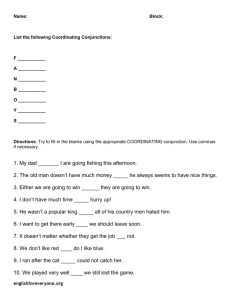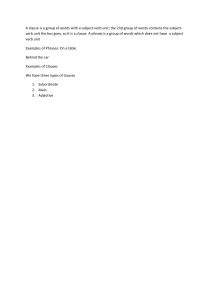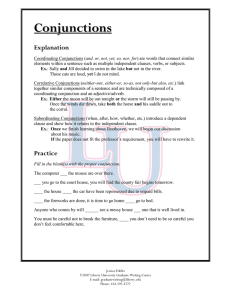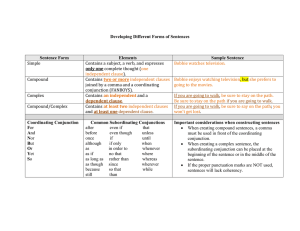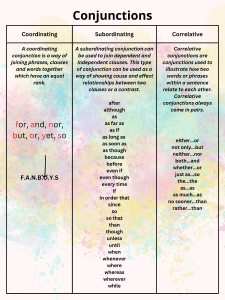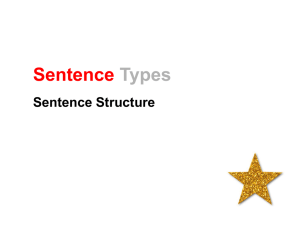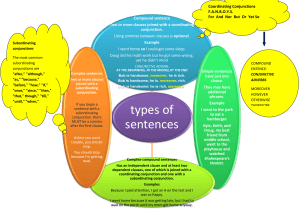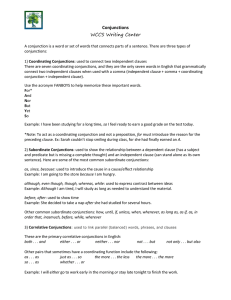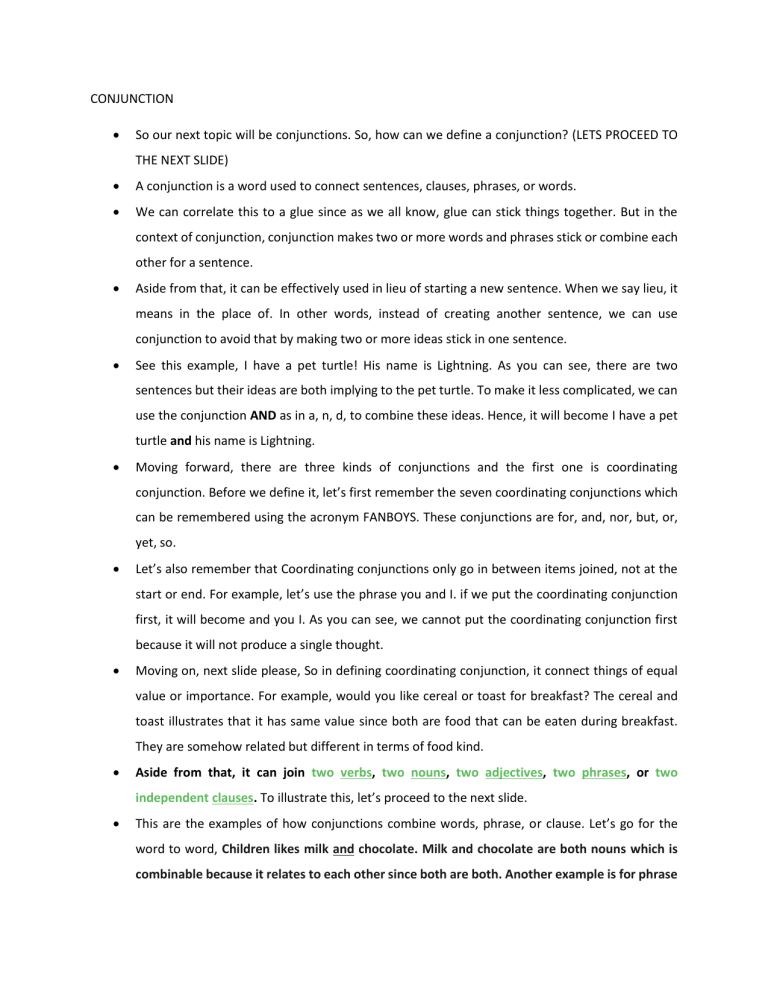
CONJUNCTION So our next topic will be conjunctions. So, how can we define a conjunction? (LETS PROCEED TO THE NEXT SLIDE) A conjunction is a word used to connect sentences, clauses, phrases, or words. We can correlate this to a glue since as we all know, glue can stick things together. But in the context of conjunction, conjunction makes two or more words and phrases stick or combine each other for a sentence. Aside from that, it can be effectively used in lieu of starting a new sentence. When we say lieu, it means in the place of. In other words, instead of creating another sentence, we can use conjunction to avoid that by making two or more ideas stick in one sentence. See this example, I have a pet turtle! His name is Lightning. As you can see, there are two sentences but their ideas are both implying to the pet turtle. To make it less complicated, we can use the conjunction AND as in a, n, d, to combine these ideas. Hence, it will become I have a pet turtle and his name is Lightning. Moving forward, there are three kinds of conjunctions and the first one is coordinating conjunction. Before we define it, let’s first remember the seven coordinating conjunctions which can be remembered using the acronym FANBOYS. These conjunctions are for, and, nor, but, or, yet, so. Let’s also remember that Coordinating conjunctions only go in between items joined, not at the start or end. For example, let’s use the phrase you and I. if we put the coordinating conjunction first, it will become and you I. As you can see, we cannot put the coordinating conjunction first because it will not produce a single thought. Moving on, next slide please, So in defining coordinating conjunction, it connect things of equal value or importance. For example, would you like cereal or toast for breakfast? The cereal and toast illustrates that it has same value since both are food that can be eaten during breakfast. They are somehow related but different in terms of food kind. Aside from that, it can join two verbs, two nouns, two adjectives, two phrases, or two independent clauses. To illustrate this, let’s proceed to the next slide. This are the examples of how conjunctions combine words, phrase, or clause. Let’s go for the word to word, Children likes milk and chocolate. Milk and chocolate are both nouns which is combinable because it relates to each other since both are both. Another example is for phrase to phrase which is the bottle is hidden at the beach or by the lakeside. Like the first one, these phrases has the same value since both talks about place. Same goes with the third example, What you say and what you do clauses talks about action or verb. We can observe in these examples that what you combine should be relatable to each other para ang thought or theme sa sentence is ma-identify sa naminaw. We can’t combine for example she wants to eat bread and flower. The flower will be out of place since the whole sentence pertains to food diba. Yet, there are also examples na the nouns, phrases, clauses are not related to each other in some areas pero combinable. Let’s say for example, children like biscuits and cuddles. It talks about food and verb right? Pero we can combine it since it somehow relates to each other sa aspect of what children likes. So moving on, here are the rules of Punctuation With Coordinating Conjunction. First, When a coordinating conjunction joins two words, phrases, or subordinate clauses, no comma should be placed before the conjunction. For example, cookies and milk. We cant put commas between them since they are only two words and the conjunction of AND already separates them. The second rule is A coordinating conjunction joining three or more words, phrases, or subordinate clauses creates a series and requires commas between the elements. For example peanuts, cookies, and milk. We must put commas to make these different words separated in one sentence. Note ko lang na putting commas before the conjunction of and is optional and putting comma or not is both correct. Lastly, A coordinating conjunction joining two independent clauses creates a compound sentence and requires a comma before the coordinating conjunction. For example, she wanted to go shopping, but Fred refused to drive her to the mall. A comma must present before BUT so that there is clarity between different ideas or points. Now that we already know about coordinating conjunctions, we can now move forward to subordinating conjunctions. So when we talk about subordinating conjunctions, It joins independent clauses with a dependent clause, or in other words, a subordinate clause. Aside from that, It indicates that a clause has informative value to add to the sentence’s main idea, signaling a cause-and-effect relationship or a shift in time and place between the two clauses. To understand the subordinating conjunction, let’s explore first what is a dependent clause or subordinate clause. So when we say dependent clause or subordinate clause, It does not express a complete unit of thought on its own. For example, where I grew up. This example illustrates a dependent or subordinate clause since it cannot stand its own sentence because it does not have a complete thought. Dependent clause relies upon an independent clause, the one that can stand on its own as a complete sentence, to form a complete idea. Just like the example, the independent clause which is I will give you a bonus, helped the dependent clause which is if you can work on Sundays, to have a complete idea. Also, the subordinate conjunction that is used here is the word IF. Here are the subordinate conjunctions that can be used in a sentence. Kindly take note of this for future purposes. So these are some examples of sentences where we use subordinate conjunctions. Let’s go with the first one. Because I forgot the time, I missed the final exam. The word because here is the subordinate conjunction that can make an independent clause combine in the subordinate clause. Same goes with the second example, we use the word before to connect the subordinate clause to the independent clause which is the I checked my money. I think that’s all for my report. Let’s proceed to the next reporter which is Miss Sablas. But since her connection is unstable, her reporting will be presented through a video presentation. Hang on a sec, let me share my screen with you.
